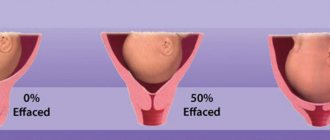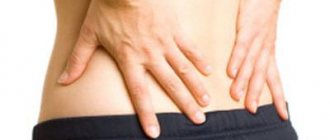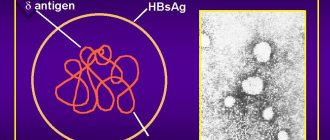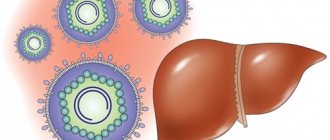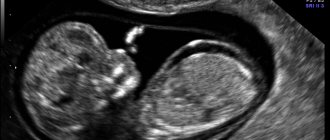Etiology
The prevalence of the disease is from 0.1 to 2% in Russia, with a larger percentage in the northern part. Much more common:
- in South American countries;
- Scandinavia;
- China;
- Denmark;
- Iceland.
Doctors believe that those at risk are women where cholestasis has been observed in several generations, as well as those with an ethnic background. Occurs in the last trimester, less often in the second.
The main causes are identified:
- multiple pregnancy;
- reduced immunity;
- the presence of parasites in the body;
- conception using IVF;
- liver diseases;
- problems with the cardiovascular system;
- inflammation in the gallbladder;
- infectious diseases;
- displacement of internal organs.
Extrahepatic
If the bile duct accumulates outside the liver, this is extrahepatic cholestasis. Main symptoms:
- Itching on the palms and soles of the feet.
- Urine takes on a dark hue.
- The stool becomes light in color.
- Jaundiced manifestations on the skin, tongue and eyeballs.
What worries the mother most is the itching, which constantly intensifies, especially during sleep. This leaves an imprint on the emotional state, the woman becomes nervous and tired.
Intrahepatic: hepatocellular and cholangiocellular
Intrahepatic cholestasis is the localization of bile inside the liver. During pregnancy, this form occurs more often in women. Sometimes leads to the development of epithelial tumors:
- Hepatocellular carcinoma is a hepatic cell carcinoma. Usually occurs due to cirrhosis of the liver, hepatitis B, C, and heredity.
- Cholangiocellular – cancer of the intrahepatic bile ducts. It is divided into three forms: massive, intrastream infiltrating, intraductal.
These are severe forms of tumors that can develop if treatment for cholestasis in a pregnant woman is ignored. To prevent negative consequences, doctors strongly recommend undergoing a full examination before conception in order to identify possible hereditary predispositions and take action.
Intrahepatic cholestasis in most cases is caused by helminthic infestations and liver pathologies.
Manifestations of cholestasis
The disease can be based on the timing of its occurrence:
- acute (sudden onset of the disease);
- chronic (alternating manifestation of the disease and its attenuation).
During the disease, the color of the skin changes:
- pronounced yellow color of the skin, sclera, and oral mucosa;
- the color practically does not change.
Change in urine color
With cholestasis of pregnancy, there are many symptoms. When a pregnant woman gets sick, the following phenomena can be noted:
- redness, itching of the skin, often this is the only sign, it only indicates cholestasis;
- rashes on the bends of the arms, legs, back;
- specific and repulsive odor of feces;
- discoloration of feces;
- change in urine color (dark);
- visual acuity decreases, there is a threat of osteoporosis (brittle bones);
- unreasonable weight loss.
In addition to pronounced specific ones, there are symptoms that most likely occur during pregnancy:
- dizziness and headache;
- gases and belching;
- inflammation of the pancreas;
- tearfulness and irritability;
- stomach upset;
- aching pain in the back.
The first, very debilitating symptom is itchy skin. In order to alleviate the condition of the expectant mother, it is recommended:
- do not go out for walks when the air temperature is high;
- wear things made from natural materials;
- sleep in a cool room;
- air humidification in the house;
- apply ice compresses to problem areas;
- lubricate scratched areas with creams with an anti-inflammatory effect;
- avoid nervous excitement, take soothing teas, and engage in auto-training.
Varieties
The disease has two forms:
- Acute (short-term) – develops quickly with the onset of symptoms.
- Chronic (long-term) - lasts for a long time, often without disturbing the woman. Sometimes acute attacks occur.
There are different varieties based on several points:
- According to the symptoms, it can be: jaundiced - the skin, eyeballs and oral mucosa acquire a lemon tint. Anicteric – in the absence of staining.
- According to the method of destroying liver cells: non-cytolytic and cytolytic.
- According to the nature of the occurrence - pathology (bile flow is slowed down), illness (delayed production of bile enzymes, disease (impaired bile flow into the duodenum).
Intrahepatic cholestasis is divided into three degrees:
- mild – mild skin itching, the threat of complications is minimal and treatable;
- medium – symptoms are more pronounced, severe itching. Fetoplantar insufficiency and child development delay often develop;
- severe - an increased number of enzymes, symptoms of increasing coagulopathy occur. With such a degree, there is a high risk of severe intrauterine complications and fetal death, it is recommended to terminate the pregnancy.
Symptoms during pregnancy
The main symptom of cholestasis is itching on the palms and soles of the feet. The disease does not have clear symptoms and proceeds slowly, gradually affecting the liver tissue. Most often occurs at the end of the third trimester, much less often in the second. But with complex changes, one can suspect the development of pathology.
Skin manifestations
The skin is affected first, with a rash and itching appearing on the arms, palms and soles of the feet. Then it spreads to the back, chest and abdomen. Sometimes excoriations (scratching) occur, in place of which pustules can form. The greatest discomfort occurs at night; unpleasant itching disturbs and disturbs peace. Taken together, this negatively affects the nervous system: a woman cannot get enough sleep and rest, she is constantly tense and stressed. In turn, stress negatively affects the child.
The color of the dermis takes on an unhealthy lemon tint due to the large amount of bilirubin in the blood. This occurs after two weeks of intense itching.
Often, skin rashes are confused with allergies and are not given the necessary importance; as a result, the disease develops and affects the body.
Feces
The color of stool may also indicate a disease. With cholestasis, stool becomes light-colored. The consistency is liquid, the smell is pungent and unpleasant. Steatorrhea develops - an excess of fat, due to a deficiency of bile secretion.
Clinical manifestations
Along with the listed symptoms, the following changes are observed:
- urine becomes dark due to a large amount of urobilinogen;
- pain in the abdomen in the area of the right intercostal space;
- increased body temperature;
- general malaise: weakness, lethargy, apathy;
- vitamin deficiency, which increases the risk of contracting acute respiratory viral infections, acute respiratory infections, and influenza;
- migraine;
- heartburn and bloating;
- flatulence;
- discomfort in the lower back;
- diarrhea;
- shortness of breath;
- sudden change of mood.
As the disease progresses, the symptoms increase and bring greater discomfort and pain.
Description of the pathology
So what is “cholestasis of pregnancy” and why does it occur? This is a disease in which degenerative changes occur in the liver. It develops due to increased sensitivity of liver hepatocytes to sex hormones, the level of which increases sharply during pregnancy.
As a result, the metabolic processes of bile acids and cholesterol are disrupted. This leads to disturbances in the synthesis of bile and its outflow, against which bile stagnation and dysfunction of other internal organs develop.
To treat cholestasis, conservative methods are prescribed that are not harmful to the fetus. But the lack of necessary therapy leads to serious complications.
Prevalence rate
Hepatic cholestasis in pregnant women is common in many countries around the world, but most often in China, Chile and Bolivia. This pathology is least common in Sweden, where there are only 40 cases of the disease per 10 thousand pregnant women. The percentage of the disease in Russia is 2%.
Complications for a pregnant woman
Cholestasis during the gestational period negatively affects the mother and child.
In the early stages
The disease does not occur early in pregnancy. The earliest time for the development of cholestasis is the 28th week of pregnancy. If treatment is ignored, the pathology poses the following threats to the child:
- developmental delay due to lack of vitamins and nutrients;
- deviations in the gastrointestinal tract;
- hypoxia;
- problems in the functioning of the nervous system;
- poor hearing;
- intrauterine death.
With severe degrees of cholestasis, the question of terminating the pregnancy arises.
For mother:
- reduced immunity;
- relapse during subsequent pregnancies;
- the occurrence of stones in the gallbladder.
In the later stages
It is in the last trimester that cholestasis is most often observed.
The consequences for the child may be the same as in earlier stages: hypoxia and suffocation, vitamin deficiency, which contributes to developmental delays and premature birth. High risk of stillbirth or death immediately after childbirth with severe disease. The woman has a difficult postpartum period, vitamin deficiency, liver disease and problems with the digestive system.
Diagnostics
It is very important to make the correct diagnosis on time and not delay treatment.
To confirm cholestasis, a visual examination of the patient, laboratory and instrumental examinations are performed. Basic diagnostic methods:
- Analysis of urine. Detects disorders of the genitourinary system.
- Blood chemistry. Shows enzymatic abnormalities and the degree of damage to internal organs.
- Analysis of serum bile acid concentrations. Identifies the cause of itching and liver dysfunction.
- Ultrasound diagnostics (ultrasound). Abdominal examination showing the functioning of the gallbladder, bile ducts and liver.
Additional examination methods:
- Holanoangiography. X-ray examination of the bile ducts.
- Endoscopic retrograde cholangiopancreatography (ERCP). X-ray examination of the pancreatic ducts and bile ducts.
- Magnetic resonance imaging (MRI). Detailed diagnosis of structural changes and activity of the liver and biliary tract.
- Biopsy. Examination of a fragment of liver tissue to determine the extent of organ damage.
Treatment
To diagnose the disease, a woman must donate blood for a biochemical analysis, undergo liver ultrasound (MRI, CT) and take liver tests. Based on the results, the doctor prescribes a course of treatment. Due to pregnancy, most medications are prohibited, so therapy consists of taking hepatoprotectors, physiotherapy and diet.
Drug treatment:
- Ursosan, Ursofalk. The active component of the drugs protects the cell membrane of the liver, stabilizes the amount of toxic substances and cholesterol.
- Enzymes: Mezim, Creon, Festal.
- Chophytol stimulates the motility of the gallbladder.
- Enterosorbents: Lactuvit, Smecta. Removes toxins and heavy substances.
- To eliminate itching - Hydrocortisone ointment.
- Vitamin complexes: Elevit, Vitrum, Pregnavit.
In addition to medications, you can use folk remedies to relieve itching:
- cream with calendula and chamomile;
- clothing made from natural fabrics to allow the skin to breathe;
- soothing teas.
Diet:
- low-fat and vegetable soups;
- fermented milk products;
- vegetable stew;
- include dishes with chicken and veal in your diet;
- egg omelettes.
Fried, spicy and smoked foods should be excluded; sea fish, citrus fruits and baked goods are also prohibited. To cleanse the body, you need to drink up to two liters of water; it is better to give preference to medicinal drinks (Borjomi, Narzan, etc.).
It is recommended to engage in swimming and light gymnastics if there are no contraindications.
The method of delivery depends on the degree of cholestasis: with a mild form, natural birth on time is acceptable, with a severe form, early birth at 36-38 weeks. If the baby's life is in danger, an emergency caesarean section is performed.
Prevention
Ideally, to prevent cholestasis and other diseases, you need to carefully plan your pregnancy, start leading a healthy lifestyle a year and a half in advance, undergo examinations for the presence of hereditary diseases and find out what negative predisposition there is.
During pregnancy, to minimize the risk of cholestasis, the following recommendations should be followed:
- proper nutrition, rich in vitamins and nutrients;
- healthy lifestyle, be sure to exclude nicotine, alcohol and drugs;
- correct drinking regime;
- timely treatment of the gastrointestinal tract;
- body weight control;
- spend enough time outdoors;
- light physical activity.
If you have poor heredity and a tendency to gastrointestinal diseases, you should visit a gastroenterologist every three or four months.
Planning a pregnancy should be taken seriously. It is important to undergo examinations and find out hereditary diseases and your own predisposition in order to exclude subsequent problems. Cholestasis is a rare disease that has serious complications if measures are not taken in time. A woman needs to carefully monitor her health during the gestational period, because mild and moderate degrees of cholestasis are treatable.


